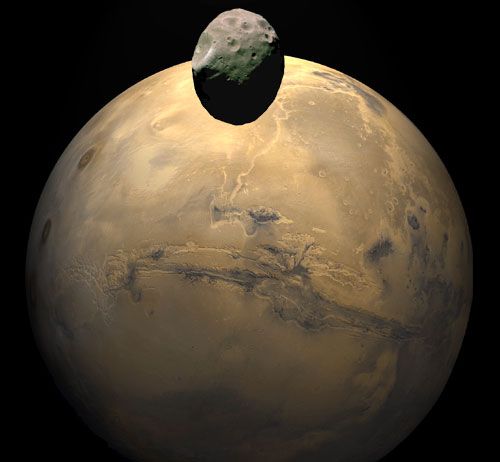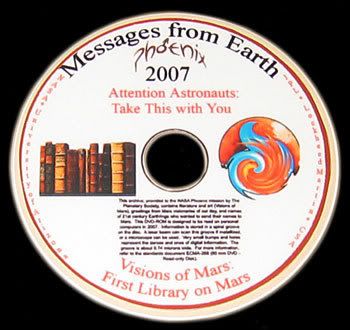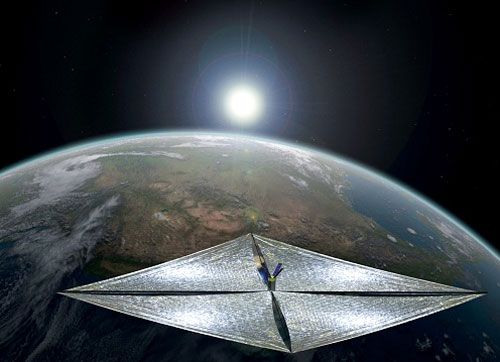
NASA / JPL / Malin Space Sciences System / RichTPar
FOBOS-GRUNT... That’s the name of the latest robotic Mars mission by Russia to be on the verge of ending in failure. What I find mind-boggling is the fact The Planetary Society—a well-known non-profit space advocacy group based in Pasadena, California—would continue to rely on Russia to send its many exciting projects towards space throughout the years, only to fail after launch during the process. The first disappointment came in 1996, when the Mars ’96 spacecraft, carrying The Planetary Society’s first Vision of Mars CD-ROM, ended up at the bottom of the Pacific Ocean after the Proton rocket carrying the probe suffered a mechanical problem after liftoff. [Another Vision of Mars DVD (shown below) has since found its way onto the surface of Mars...courtesy of NASA’s now-defunct but very-successful Phoenix lander.] The second disappointment came in 2005, when a Volna rocket—carrying the Society’s Cosmos 1 solar sail—malfunctioned after launch, preventing Cosmos 1 from reaching its intended orbit. And now stranded in low-Earth orbit (LEO) with Fobos-Grunt is the Society’s Phobos LIFE (Living Interplanetary Flight Experiment) project...which consists of a canister (a.k.a. 'biomodule') that contains millions of microorganisms that were intended to test the "Transpermia Hypothesis": Which theorizes that microbes could survive trips between planets onboard rocks blasted into deep space by impacts. A Shuttle LIFE canister, which is similar to the one placed on Fobos-Grunt, successfully flew into LEO onboard the orbiter Endeavour during flight STS-134 last May.

The Planetary Society
The Planetary Society has another project coming up...the Lightsail-1 solar sail that is currently scheduled to fly into space no earlier than mid-2012. No launch vehicle has yet been selected to send Lightsail-1 into Earth orbit. Not to sound like an arrogant Yankee space geek or something, but I really do hope the Society considers American rockets and American rockets only (and maybe a Japanese H-IIA vehicle) when it comes to choosing a means of transport once Lightsail-1 is ready to soar into the sky. Of course, since Lightsail-1 will be a secondary payload, it’s up to the organization that is responsible for the primary payload to decide which rocket will be used for the mission. But I’ll take a Delta II, an Atlas V or a Falcon 9 vehicle (a Delta IV rocket, currently the largest in the U.S. expendable launch vehicle inventory, might be bit of an overkill) over a converted Russian submarine-launched ballistic missile (which is what Cosmos 1 flew on) any day. Though I hope the Society doesn’t consider a Taurus XL rocket when/if that one becomes operational again. I’m still peeved over the Glory spacecraft’s launch failure last March.

The Planetary Society

No comments:
Post a Comment